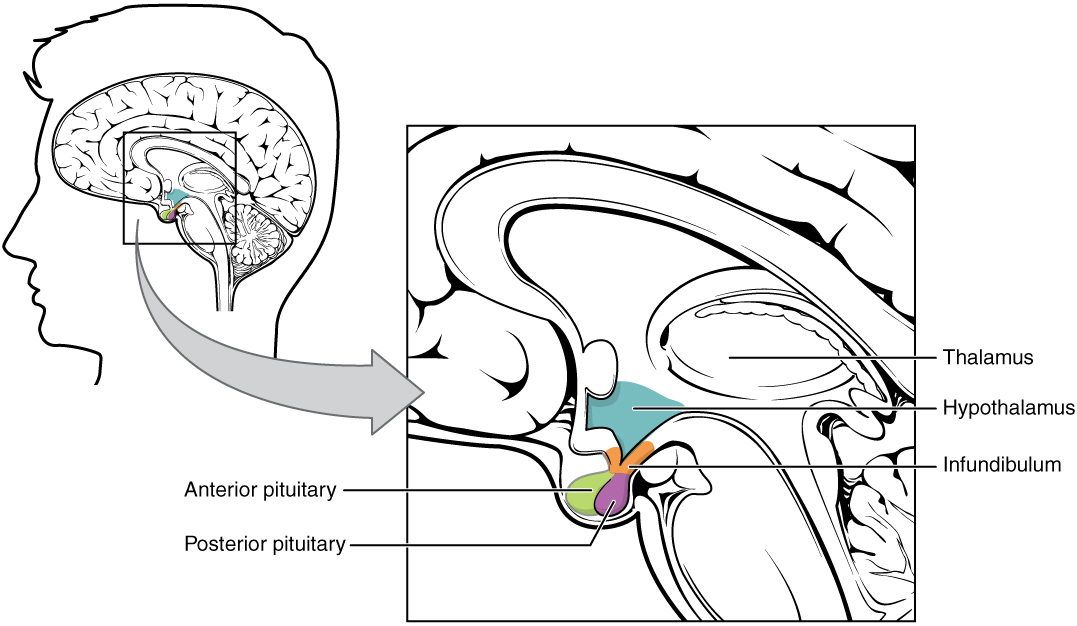Playlist
Show Playlist
Hide Playlist
Introduction to Female Reproductive Endocrinology
-
Slides Female Hormones Endocrine System.pdf
-
Download Lecture Overview
00:00 Female Reproductive Endocrinology. We're going to go through the processes associated with producing estradiol and progesterone. There are a number of hypothalamic-pituitary-gonadal-axis issues we need to deal with. So similar to our other HPA axis, there is a three-step process in which we have hypothalamic release of a releasing hormone, will stimulate the pituitary gland, the anterior pituitary, and then we'll have a release of a pituitary stimulatory. In fact this time we'll have two LH and FSH and that will stimulate the ovaries and that is our hypothalamic-pituitary-ovarian axis. The parts of the hypothalamus we need to be especially concerned with here are the preoptic regions and the supraoptic regions. These are the two portions of the hypothalamus that will project their particular axons to the blood vessels that then will perfuse the anterior pituitary. Here we're going to be stimulating gonadotropes. 01:18 Gonadotropes will then release luteinizing hormone and follicle-stimulating hormone. The control of luteinizing hormone and follicle-stimulating hormone adds another layer with pulsatile secretions. Thus, throughout the course of a woman's life, there will be a number of pulsatile secretions that help control the levels of the hormones. This pulsatile secretion, I think is very helpful if you want to think about not needing to have high levels of these hormones all the time. You can keep hormone levels little bit lower if you allow them to pulse. So let's go through some of the pulses that occur in woman's life. Early on with being a fetus and in infancy, there are some large spikes of luteinizing hormone and follicle-stimulating hormone. Then it's kind of quiescent for a number of years before adolescence. Then as a young woman starts to develop and then in the reproductive years, you'll see a large number of spikes that occur. These spikes are part of the normal monthly surges that occur with both LH and FSH. Finally, as a woman is older, the levels of luteinizing hormone and follicle-stimulating hormone are actually very high and this process will be part of the menopause and then perimenopause component. The different rhythms that a woman will go through here are with circadian and also less-than-a-day rhythms, ultradian rhythms. So let's look at what these are like. You can see day and night here and these are circadian rhythms but you notice even throughout the course of a daytime or especially at nighttime we see these little surges in LH and FSH. These are these ultradian rhythms. There are also monthly rhythms. These are sometimes referred to as infradian rhythms and this will be the normal course throughout the reproductive years of a woman's life. 03:38 If the person had a very typical menstrual cycle, it will be about 28 days but again that's only an average. Different individuals have some variation in that monthly surge of cycling.
About the Lecture
The lecture Introduction to Female Reproductive Endocrinology by Thad Wilson, PhD is from the course Reproductive Physiology.
Included Quiz Questions
Which of the following nucleus secretes the GnRH in females?
- Preoptic
- Ventromedial
- Amygdaloid
- Suprachiasmatic
- Arcuate
In which of the following period FSH and LH are both seen in most abundance?
- Menopause
- At conception
- 1st trimester
- 3rd trimester
- Birth
What is the average concentration of LH during the monthly surges in mU/dL?
- 70
- 10
- 20
- 50
- 90
During puberty, what is seen in the rhythm of LH secretion?
- Increased at night
- Decreased at night
- Constant through day and night
- Increased in the day
- Decreased in R.E.M. sleep
Customer reviews
5,0 of 5 stars
| 5 Stars |
|
5 |
| 4 Stars |
|
0 |
| 3 Stars |
|
0 |
| 2 Stars |
|
0 |
| 1 Star |
|
0 |






